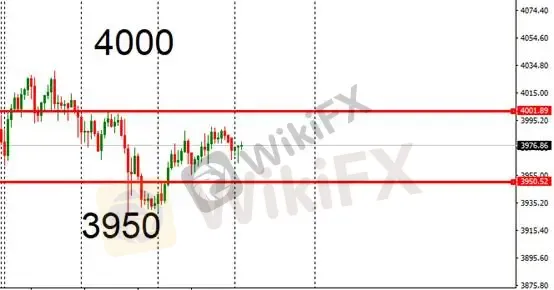简体中文
繁體中文
English
Pусский
日本語
ภาษาไทย
Tiếng Việt
Bahasa Indonesia
Español
हिन्दी
Filippiiniläinen
Français
Deutsch
Português
Türkçe
한국어
العربية
U.S. Judiciary, Fiscal, and Economic Fronts Intertwine — Market Faces a Policy Vacuum
Sommario:The United States has reached a critical turning point this week as the Supreme Court begins hearings on the legality of the Trump administrations tariff policies, while the government shutdown extend
The United States has reached a critical turning point this week as the Supreme Court begins hearings on the legality of the Trump administrations tariff policies, while the government shutdown extends into its 36th day — the longest in American history. As markets closely monitor the policy outlook, recent labor and services data suggest the economy remains resilient, though inflationary pressures are once again resurfacing.
As of now, the U.S. government shutdown has lasted 36 days, officially marking the longest in the nation‘s history. In a recent address, former President Donald Trump acknowledged the shutdown’s negative effects on the stock market, aviation sector, and the Supplemental Nutrition Assistance Program (SNAP), yet maintained optimism that U.S. equities would “reach new highs.” Trump urged Congress to revise the filibuster rule to accelerate budget approval and reopen the government swiftly. However, concerns continue to mount. Wall Street analysts warn that a prolonged shutdown could create data gaps, reduce consumer spending among federal workers, and exert real short-term pressure on the economy.
According to Bank of America (BofA), the key catalyst to end the shutdown may lie in the political fallout from the suspension of SNAP, which provides food assistance to roughly 42 million Americans, or 12% of the population. As funding runs dry, a growing social crisis could place immense pressure on both political parties. Analysts argue that this “political cost” will likely force Democrats and Republicans to accelerate negotiations to prevent unrest ahead of the Thanksgiving holiday. Healthcare subsidy disputes and the upcoming travel season also increase the urgency for compromise.
From an economic standpoint, October‘s ADP private payrolls — often referred to as the “mini nonfarm payrolls” — rose by 42,000, surpassing expectations of 30,000 and reversing the prior month’s 32,000 decline. The data indicate that the labor market has stabilized after two months of contraction. Meanwhile, the ISM Services PMI for October came in at 52.4, above expectations of 50.8 and marking an eight-month high. The new orders index surged to a one-year peak, reflecting signs of improving demand.
However, the input prices index jumped to 70, the highest in three years, signaling a resurgence of inflationary pressures. Although the employment sub-index remained in mild contraction territory, the overall data suggest that the U.S. economy is not exhibiting systemic signs of recession.
The United States now stands at a delicate intersection of judicial, fiscal, and economic challenges. The Supreme Court‘s ruling will not only determine the fate of Trump’s tariff policies but could also redefine the balance of power between the executive and legislative branches. Meanwhile, the prolonged shutdown and the growing humanitarian strain from SNAP disruptions are pressuring both parties toward a short-term resolution.
On the economic front, while employment and service sector data continue to show resilience, rising inflation risks could limit the Federal Reserves room for further rate cuts. In the coming weeks, whether Washington can break its political deadlock will heavily influence market sentiment and capital flows. Should the government reopen and judicial risks subside, risk assets could see a year-end rebound; conversely, if the fiscal and political impasse persists, volatility in Treasuries, gold, and the U.S. dollar may intensify.
Gold Technical Analysis

Gold is currently consolidating within the $3,950–$4,000/oz range. Traders may consider a buy-low, sell-high strategy within this zone, setting stop-losses of $10–$20 per ounce.
Resistance: $4,000/oz
Support: $3,950/oz
Risk Disclaimer
The views, analysis, research, prices, and other data provided above are for general market commentary only and do not represent the views of this platform. Readers should assume full responsibility for their trading decisions. Please trade cautiously.
Disclaimer:
Le opinioni di questo articolo rappresentano solo le opinioni personali dell’autore e non costituiscono consulenza in materia di investimenti per questa piattaforma. La piattaforma non garantisce l’accuratezza, la completezza e la tempestività delle informazioni relative all’articolo, né è responsabile delle perdite causate dall’uso o dall’affidamento delle informazioni relative all’articolo.
WikiFX Trader
Exness
Ultima
EC Markets
D prime
Plus500
octa
Exness
Ultima
EC Markets
D prime
Plus500
octa
WikiFX Trader
Exness
Ultima
EC Markets
D prime
Plus500
octa
Exness
Ultima
EC Markets
D prime
Plus500
octa
Rate Calc



